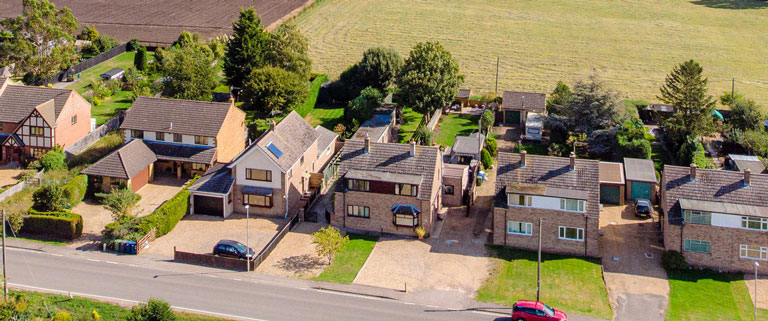
The Bank of England has announced that it will reduce the Base Rate by 0.25%, taking it to 4.5%, in the first decision of the year. Base Rate was held at 4.75% in December after two cuts in 2024.
The Bank meets every six weeks to decide what should happen to interest rates, with the aim of keeping inflation to its target and keeping the wider economy healthy. It was announced that inflation was at 2.5% in the year to December, which is still above the 2% target the government sets for the Bank.
The financial markets have been widely predicting a cut to interest rates this week, as continuing to hold rates could have a negative knock-on effect on economic growth, impacting businesses and households further down the line.
There has been marginal increases in mortgage rates in recent weeks, despite some lenders cutting rates across mortgage products. However, in the past week, the average rate for a 2-year fixed rate mortgage has fallen by 0.02% to 5% compared to a week ago, while the average rate 5-year fixed rate is now 4.79%.
“The Bank of England (BoE) has kick-started 2025 with the first Base Rate cut of the year. The decision follows a weekend of unsettling news of tariff announcements from across the Atlantic, which will lead to caution from the Bank while it takes time to assess possible impacts. However, today’s cuts were still widely anticipated as the BoE takes slow and steady steps towards driving growth, amid sluggish inflation remaining above the 2% target since November.
“At the end of last year, the financial markets were forecasting four Base Rate cuts during 2025, but inflationary pressures have watered this down to two, or potentially three rate cuts of 0.25%, which could still see us closing out the year with Base Rate lowered to 4%, or further.”
With the early promising signs of home-mover activity we’ve been seeing since the start of this year, the outlook for borrowers remains stable.
“While we’ve seen some mortgage rates rise in recent weeks, these have been mostly in the higher and lower loan-to-value ranges, and average mortgage rates are still below where they were when they spiked in January.
“Some of the major lenders have cut rates in recent days, and if the Base Rate continues to follow the expected downward trajectory in 2025, there will be some headroom for lenders to continue to slowly reduce their pricing. The UK mortgage market remains competitive, but headline rates will continue to be impacted by events both in the UK and overseas,” he adds.
Changes to the Bank’s Base Rate can impact how much interest you’ll pay on loans, including mortgages. If you’re on a fixed-rate deal, your monthly payments won’t change until the end of your deal. And if you’re on a tracker mortgage, or a variable rate mortgage that follows Base Rate changes, this month’s Base Rate reduction will mean your monthly payments will take on this drop.
If you’re coming to the end of your fixed-rate mortgage soon, you’ve probably already started to think about the rate you’ll be offered on your next deal.
If you’re thinking of moving home soon, a good way to find out how much you could borrow is to use a mortgage calculator. You can get a personalised result by applying for a Mortgage in Principle, which will take you one step closer to a mortgage offer.
In July 2023, the Mortgage Charter was launched to help those struggling to meet their monthly payments, as well as borrowers who are coming to an end of their fixed rates soon.
The Mortgage Charter encourages lenders to be flexible and offer borrowers the chance to lock in a new deal up to six months before their current rate ends. Of course, borrowers can also look at moving to another lender – commonly known as remortgaging – but this can take longer, as you have to go through a normal lending process, such as income checks, the legal process, and maybe a valuation of your home.
This all takes time, and you would want to make sure you’re looking around a few months before the end of your current deal to avoid falling onto your lender’s Standard Variable Rate (SVR) – which will cost more than the repayments you’d have made on a fixed rate mortgage. The current average for SVRs is 7.73%.
You can check the current remortgage rates here, or use our Remortgage Calculator.
Lenders’ ‘stress test’ calculations – which is how they calculate whether someone could afford a mortgage were their repayments to jump considerably – are directly linked to the Standard Variable Rates that we just talked about above.
The ‘stressed rate’ is usually the lender’s SVR, with at least 1% added on top. So, if lenders’ SVRs reduce in line with this Base Rate cut, we might start to see affordability improve, because the stressed amount will now be lower than if Base Rate wasn’t reduced today.
Get an indication of what your property is worth for sale and rental
Use our online calculator to get an idea of how much you could borrow
Work out how much Stamp Duty you’ll need to pay on your new home

Check out the homes we have available for sale in Cambridgeshire